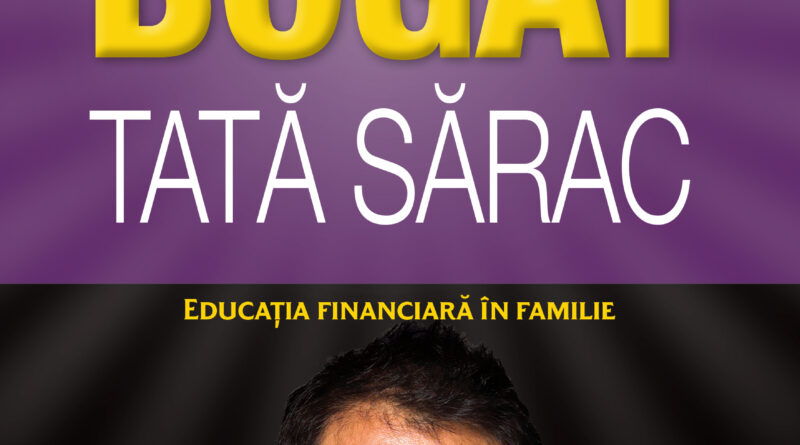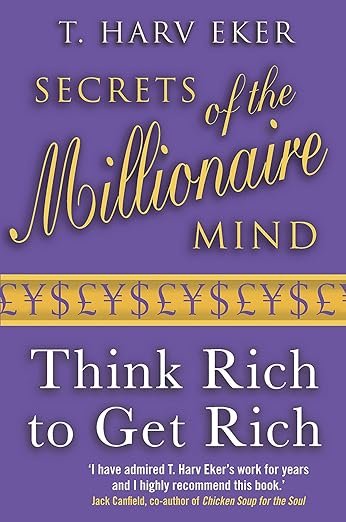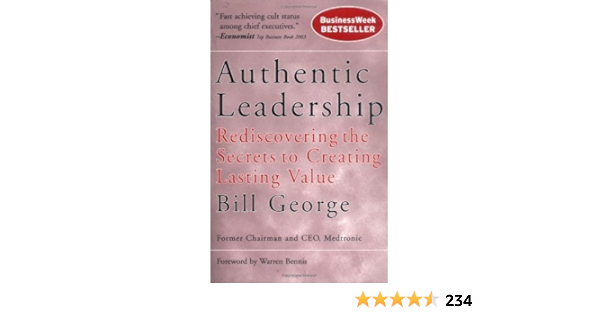Rich Dad Poor Dad: Financial Lessons from Robert Kiyosaki
Introduction to the Concept of the Rich Dad and Poor Dad
In his book Rich Dad Poor Dad, Robert Kiyosaki presents two contrasting mindsets about money and financial education, represented by his biological father (the “poor dad”) and his best friend’s father (the “rich dad”). These paternal figures embody different approaches to work, financial success, and education. Through these two profiles, Kiyosaki highlights how an individual’s mindset influences their financial success in life.
The poor dad advocates for formal education and a stable job as the foundation for a decent living. He believes that a secure career and savings are the keys to a worry-free financial life, driven by the conviction that steady employment is essential for financial security. On the other hand, the rich dad embraces a different perspective, emphasizing wealth accumulation through smart investments and financial education. He argues that learning about money, real estate, and capital markets is crucial for building a solid foundation that enables financial independence.
These opposing views on money reflect not just different approaches to education and work but also how mindsets can shape life choices. Understanding these concepts is vital for anyone looking to improve their financial situation, as the right mindset can open doors to financial opportunities that might otherwise remain inaccessible. Thus, examining these two financial mindsets helps us reevaluate our own attitudes and consider effective strategies for improving our standard of living.

Defining Assets and Liabilities
One of the most valuable financial lessons Robert Kiyosaki presents in Rich Dad Poor Dad focuses on deeply understanding assets and liabilities. According to Kiyosaki, assets are things that put money in your pocket, while liabilities are things that take money out. This distinction is essential for anyone looking to improve their financial situation. For example, a rental property can be considered an asset because it generates passive income. In contrast, a mortgage on a home you live in becomes a liability since it does not produce income.
The Importance of Accumulating Assets
Building and accumulating assets is crucial for wealth creation. Kiyosaki emphasizes that many people focus on acquiring liabilities, which can lead to financial instability. For instance, buying luxury cars or expensive gadgets may seem appealing, but they do not generate income and can become financial burdens in the long run. Instead, investing in stocks, bonds, or real estate is seen as a more effective strategy for building a strong portfolio of assets.
Strategies for Building a Financial Foundation
To start building your financial foundation, it’s essential to shift your mindset and learn how to save and invest in assets. An effective strategy is allocating a percentage of your monthly income to a savings or investment account. Additionally, you should educate yourself about available investment opportunities and be willing to take calculated risks. Attending financial education courses and researching markets can provide a solid knowledge base for making informed decisions. Through disciplined action, you can transform liabilities into assets, leading to significant personal wealth growth.
The Importance of Financial Education
Financial education is a crucial aspect of personal and professional development, significantly impacting long-term financial success. Unlike traditional education, which often focuses on academic subjects, financial education provides the knowledge needed to manage financial resources effectively. In Rich Dad Poor Dad, Robert Kiyosaki emphasizes that those who understand fundamental financial concepts have significant advantages in life, including the ability to make better-informed decisions about savings, investments, and spending.
Another essential aspect of financial education is the ability to navigate the complexities of today’s financial system. Good money management is not just about saving—it’s also about investing wisely and diversifying income streams. Financially literate individuals can identify opportunities that others might miss, helping them build a secure future. For example, knowledge about capital markets, real estate, financial instruments, and savings strategies plays a crucial role in shaping a healthy financial mindset.
Numerous resources are available for acquiring financial education, including books, online courses, seminars, and workshops. These resources range from introductory information to advanced investment strategies. Actively participating in ongoing financial education not only informs but also encourages personal and professional growth. Thus, prioritizing financial education becomes a critical step for anyone looking to build a healthy and sustainable financial life.
The Entrepreneurial Mindset
Within the discussion of financial education, it’s essential to distinguish between the employee mindset and the entrepreneurial mindset. The employee mindset is often characterized by a conservative approach to career and finances. These individuals focus on job security, follow a routine, and seek long-term stability, which can result in limited professional satisfaction and restricted decision-making power. On the other hand, entrepreneurs embrace uncertainty and the risks associated with innovation and self-initiative. They are willing to invest time and resources in developing creative ideas and solutions, hoping to achieve long-term financial rewards.
The risks of entrepreneurship are evident, but the potential rewards are varied and can include not only higher income but also financial independence, decision-making freedom, and opportunities for personal and professional growth. A successful entrepreneur is often seen as a leader who inspires others and identifies opportunities where most see only obstacles. This proactive mindset combines creativity with strategy, allowing them to pivot quickly in the face of challenges.
Cultivating an entrepreneurial mindset is not just about taking risks—it’s about adopting a perspective that values continuous learning, adaptability, and innovation. Readers can start by assessing their current thinking, identifying the limitations imposed by their comfort zones. Engaging in personal projects, attending workshops, or reading specialized materials are useful ways to strengthen entrepreneurial skills. This mindset can transform not only careers but also personal lives, bringing a sense of fulfillment and achievement.
The Role of Investments in Wealth Building
Robert Kiyosaki’s theory, presented in Rich Dad Poor Dad, emphasizes the importance of investments as the foundation of wealth building. According to Kiyosaki, it’s not enough to earn money—you must also know how to invest it effectively to grow your capital. Among the most recommended types of investments are real estate and stocks, each with its own advantages and disadvantages.
Real estate investments are often perceived as a stable, long-term option. Kiyosaki argues that real estate can generate significant passive income, especially through rentals. The primary advantage of these investments lies in the property’s appreciation over time, which can lead to substantial profits. However, investing in real estate also involves risks, such as market fluctuations, maintenance costs, and potential difficulties finding tenants.
On the other hand, stock investments can offer quick returns, with the potential to generate considerable short-term profits. Kiyosaki encourages investors to diversify their portfolios by purchasing stocks across various sectors, minimizing risks. However, the volatility of financial markets can be challenging, and rapid stock price fluctuations may lead to losses if not managed properly.
It’s essential for investors to develop solid investment strategies, such as risk assessment and setting clear goals. By approaching these investment types correctly, readers can maximize their profits and build a more prosperous financial future.
Managing Debt
Debt plays a crucial role in an individual’s financial health and can deeply affect their ability to achieve long-term financial stability. Within the category of debt, there are two main types: good debt and bad debt. Good debt contributes to wealth growth, such as loans for real estate investments or education, while bad debt is associated with excessive consumption and unnecessary spending. The latter can quickly lead to an unbearable financial burden.
One of Robert Kiyosaki’s emblematic lessons emphasizes the importance of debt management, challenging readers to rethink their perception of debt. An effective debt management strategy involves prioritizing debts based on interest rates and their impact on monthly budgets. Thus, it’s crucial to pay off high-interest debts first to avoid accumulating additional costs. Additionally, debt consolidation may be an option to consider, simplifying payments and potentially reducing interest rates.
A key aspect Kiyosaki highlights is financial education. People must learn about the differences between assets and liabilities and how debt can influence cash flow. Effective debt management requires awareness of all expenses and taking control of personal finances. By adopting sound principles and rigorous financial planning, it’s possible to avoid the debt trap and build a healthier financial future.
The Importance of Networking
Networking is a crucial element in personal and professional development, significantly impacting financial success. Building valuable relationships can open doors to opportunities that might otherwise be inaccessible. For example, meeting people in a desired field can provide new perspectives, mentorship, or even collaboration proposals. Beyond this, networking offers a platform for exchanging ideas and resources, facilitating personal and professional growth.
A fundamental aspect of effective networking is the ability to create authentic connections. It’s essential to approach networking with an open mindset, being genuine and showing real interest in others. We encourage reciprocal exchanges, meaning that while we benefit from our relationships, we must also be willing to offer help and support to others. This principle of reciprocity not only strengthens others but also enhances our reputation in the community.
Building a network of contacts doesn’t happen overnight. It’s important to dedicate time to nurturing these relationships. Attending industry events, webinars, or local gatherings is essential for meeting people who could become business partners or mentors. Additionally, using online platforms, such as professional social networks, can facilitate expanding this network. Maintaining regular communication with people in your network is also crucial, as it helps you stay updated on developments in your field.
The Culture of Calculated Risks
The principle of calculated risks is central to Robert Kiyosaki’s teachings in Rich Dad Poor Dad. This culture involves accepting well-assessed and carefully evaluated risks with the goal of gaining financial advantages. By embracing this concept, individuals can maximize their potential for success in business and investments.
Calculated risks do not refer to impulsive actions or uninformed decisions. Instead, they involve detailed analysis and a deep understanding of available opportunities. For example, an entrepreneur who decides to invest in an emerging business takes risks but bases their decisions on market research and financial forecasts. Such strategies can lead to substantial gains.
A notable example is investor Warren Buffett, who has faced seemingly risky decisions over time. He has emphasized the importance of fundamental analysis and long-term strategy rather than short-term impulsive reactions. These choices have propelled him into a leadership position in the investment world.
Therefore, risk assessment can be carried out through a series of steps: analyzing the economic context, identifying potential obstacles, and evaluating the potential impact of decisions made. Additionally, it’s essential to develop a continuous learning mindset, adapting based on results obtained. This flexibility helps manage risks and, ultimately, maximizes the chances of financial success.
Conclusion: Lessons Applied in Daily Life
The book Rich Dad Poor Dad by Robert Kiyosaki offers a series of fundamental lessons that can be implemented in daily life to improve financial situations. These lessons are not just theoretical—they are designed to inspire concrete actions and develop a prosperity-oriented mindset. One of Kiyosaki’s most important ideas is the need to work not just for money but to learn how to make money work for you. This shift in mindset is essential for achieving financial independence.
To apply these lessons, it’s recommended to start with continuous education. Investing in financial knowledge through books, courses, or seminars can open doors to opportunities that might otherwise be overlooked. Creating a budget and tracking expenses are fundamental steps in effective money management. Additionally, developing the ability to identify and evaluate investment opportunities is crucial. Kiyosaki suggests that acquiring income-generating assets should be a top priority, contributing to building a solid financial foundation.
Another important aspect is changing your social circle. Interacting with like-minded, success-driven individuals can be extremely beneficial. They can provide support, advice, and perspectives that help maintain motivation and generate new ideas. In conclusion, applying the lessons from Rich Dad Poor Dad in daily life is not just a choice—it’s a necessity for anyone looking to transform their financial destiny and achieve desired results.
10 Frequently Asked Questions About the ‘Rich Dad Poor Dad’ Concept
- What do the “rich dad” and “poor dad” represent in Robert Kiyosaki’s book?
The two figures symbolize different money mindsets: the “poor dad” promotes formal education and financial security through a stable job, while the “rich dad” emphasizes financial education and investments. - Why is financial education so important, according to Kiyosaki?
Financial education provides the knowledge needed to manage money effectively, invest wisely, and build assets, avoiding financial pitfalls that lead to instability. - How does Robert Kiyosaki define assets and liabilities?
Assets are things that generate income (e.g., rental properties), while liabilities are things that drain money (e.g., debts or recurring expenses). - What is the main difference between an employee mindset and an entrepreneurial mindset?
Employees seek financial stability through a secure job, while entrepreneurs take calculated risks to generate higher income and financial independence. - Why is it important to accumulate assets rather than liabilities?
Assets contribute to wealth growth through passive income, while liabilities create debt and limit available cash flow. - How can someone start building a solid financial foundation?
By saving a portion of income, investing in income-generating assets, and continuing financial education to make informed decisions. - What are Kiyosaki’s recommended strategies for managing debt?
Prioritize paying off high-interest debt, avoid “bad debt,” and use “good debt” for profitable investments. - How does mindset influence financial success?
Mindset shapes financial choices; an investment-focused, financially educated mindset leads to independence, while a conservative mindset limits opportunities. - What role does networking play in wealth building?
Networking helps identify opportunities, access valuable resources, and collaborate with supportive individuals in your financial journey. - How can the lessons from Rich Dad Poor Dad be applied in daily life?
By shifting perspectives on money, creating assets, making smart investments, pursuing continuous financial education, and developing an entrepreneurial growth mindset.









